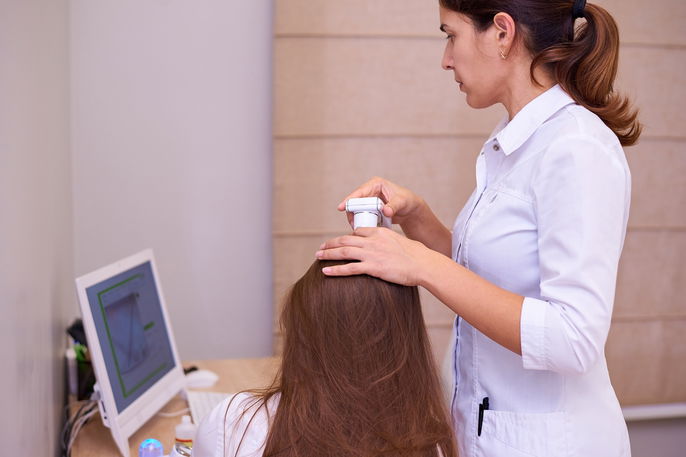Alopecia treatment is usually aimed at controlling hair loss, reducing bald spots, and preventing worsening of the condition. It is important to note that alopecia areata, androgenetic alopecia and cictricial alopecia is not curable, however.
Treatment for alopecia that your doctor may prescribe include oral medications, like finasteride and sprinolactone, and topical medications, like minoxidil and alfatradiol.
Patients who go without alopecia treatment may experience progressive hair loss from the scalp or other areas of the body (like the beard, legs and arms. Hair can fall out in large quantities, leaving affected areas of the skin or scalp fully exposed.

List of treatment options
The main treatments indicated for alopecia are:
1. Oral medications
Oral medications such as minoxidil, finasteride and spironolactone may be indicated in cases of androgenetic alopecia, traction alopecia and telogen effluvium to promote healthy hair growth and slow hair loss. These medications stimulate blood circulation which can prolong the hair growth phase.
In more severe cases of alopecia areata, the doctor may also prescribe oral corticosteroids and immunosuppressants.
2. Topical medications
For the treatment of alopecia areata, androgenetic and cicatricial alopecia, the doctor may recommend the use of topical ointments or lotions that contain minoxidil or finasteride. These are applied to affected areas to stimulate hair growth.
3. Laser therapy
Laser therapy is a treatment performed with a low-power laser that reduces inflammation and has healing properties.
Treatment may be indicated in the initial stages of some types of alopecia and may help to recovery hair follicles.
4. Hair mesotherapy
Hair mesotherapy is a technique that consists of injecting solutions containing vitamins, amino acids, corticosteroids and/or minoxidil to promote hair growth.
This treatment may be prescribed for cases of alopecia areata and cicatricial alopecia.
5. Hair transplant
A hair transplant is a surgical treatment that is performed by removing hair follicles from other areas of the body to be transplanted on the scalp.
A hair transplant may be indicated for cases of androgenetic, cicatricial or traumatic alopecia.
6. Supplements
Supplements containing B vitamins, zinc, iron, selenium and vitamin A may be prescribed by the doctor or registered dietitian to help in the treatment of alopecia related to a nutritional deficiency.
Is there a cure for alopecia?
Some types of alopecia, such as seborrheic, traction alopecia and telogen effluvium, can be reversed when diagnosed and treated by a dermatologist in its early stages.
Some types of alopecia, like alopecia areata, androgenetic alopecia and frontal fibrosing alopecia, cannot be cured. In these types, medical treatment can help to regulate inflammation and hair loss, reducing or preventing new bald patches.
Is there a cure for alopecia in women?
The types of alopecia that most commonly affect women, like traction alopecia and telogen effluvium, can be treated effectively.
However female alopecia areata, androgenetic alopecia and frontal fibrosing alopecia have no cure. Proper treatment can improve the appearance of the hair and prevent further losses.






























